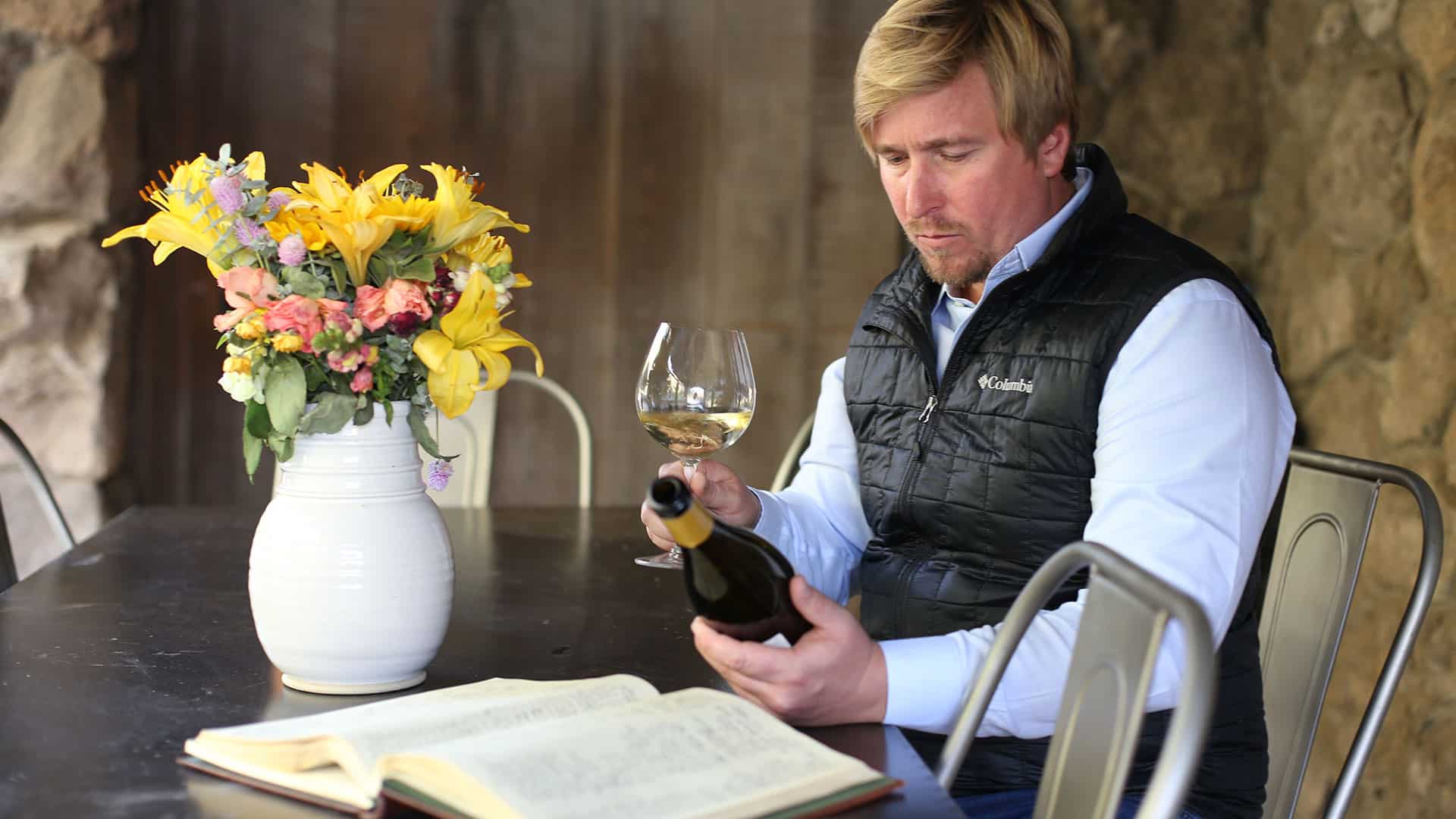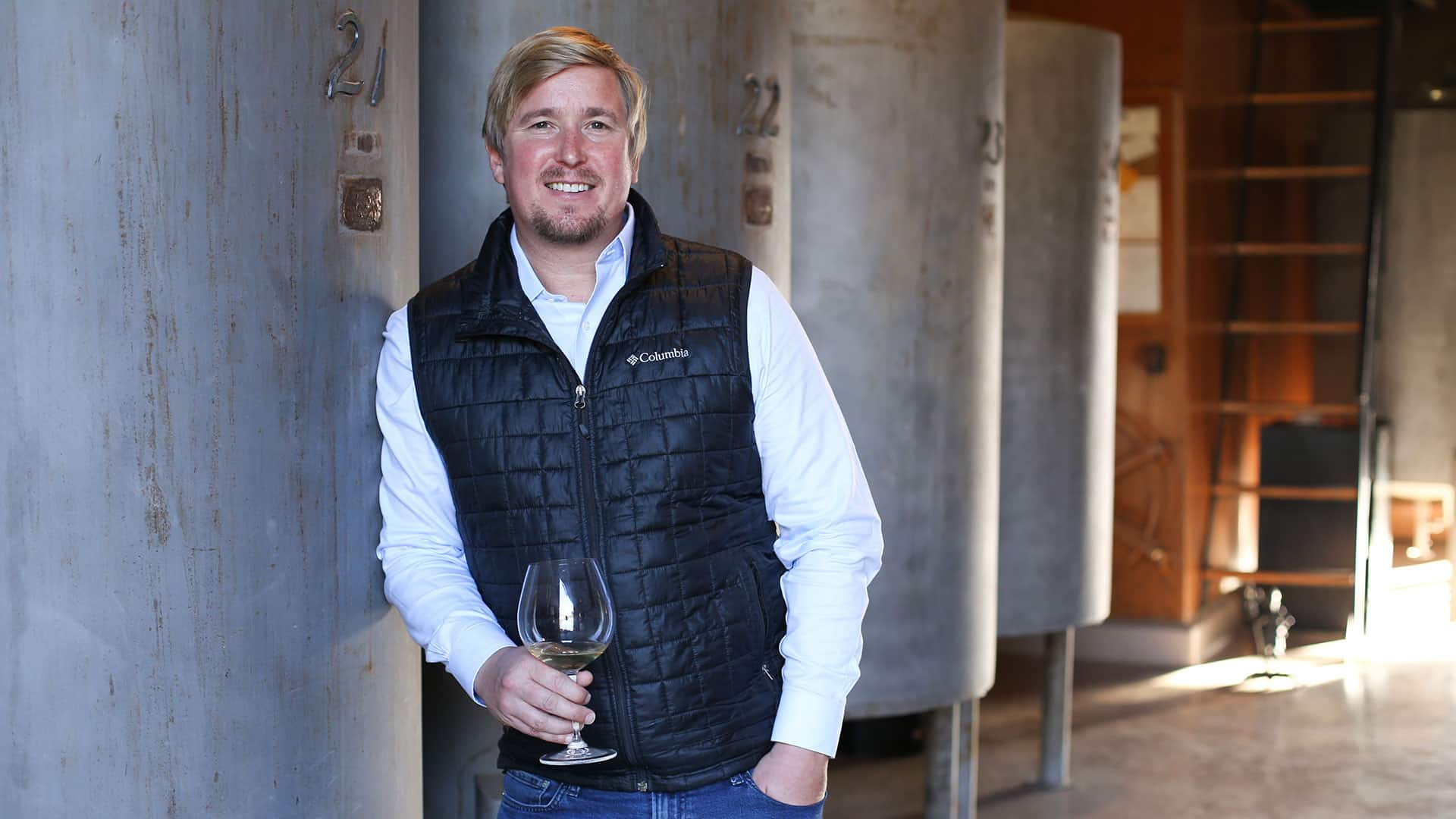SommSelect at Hanzell Vineyards from Kreativ Ctrl on Vimeo.
Step into any nice restaurant and you’ll be served a wine list. On that list will be names and places you’ve never heard of – cue, the Sommelier. The “wine waiter” as the French say, will come and assist you in choosing the taste you are looking to achieve.
A good Sommelier will transport you, if not for a mere moment, to the region they are describing. They often help you visualize the winemaker, vineyard, and yes, even the taste of the wine before it hits the glass. By understanding its story, you are in essence, enhancing your relationship with the wine, and of course, its pairing with the food.
For Master Sommelier, Ian Cauble, wine is a way of life. And like any good Somm, it’s not only about enjoying wine. It is about sharing that joy with others. To do this at scale, he started a company called SommSelect, which brings the Sommelier directly into the consumer’s home.
MiLLENNiAL caught up with Ian at Hanzell Vineyards in Sonoma, CA. Here, on this beautiful vineyard where acres of vines lace a historic mountain top, we poured a signature bottle of Hanzell’s 2016 Pinot Noir and relaxed into the rustic Burgundy-inspired property.
As we sat from one of the most picturesque chateaus overlooking the Sonoma Valley, nostalgia overcame Ian’s eyes. The tremendous landscape had sparked a memory that flashed across his face. We were no longer in 2019. Instead it was 2005, and Ian had just returned from a sabbatical when he discovered Hanzell Vineyards. He takes a sip of Pinot Noir, and returns to the present moment. As if by some instinctual mechanism, he immediately starts describing the wine as “intense character and tight,” saying, “this one will age nicely over 25-30 years.”
But how does someone know this? What drives a person to want to become so entrenched in the details? Can you really train your palate to pick up on certain notes, or is this skill more of an art? To find out, we needed to understand how Ian got to where he is today.
The Boy Who Craved the World
Growing up in Huntington Beach, Mexican food is no stranger to locals. Ian developed a love for Latin flavors and quickly began exploring the relationship between food and drink. He went on to study International Business with a focus on wine and Spanish at Sonoma State University.
A family friend, who lived near the college, would invite Ian over for “slow-food” dinners. He recalls, “He would get heirloom lamb and potatoes from the farmers market, and would open up these 12-14 year old bottles of wine, and share these great food and wine experiences with me.” These stories naturally inspired Ian to want to explore the global culinary scene. And as fate would have it, that dream would soon become a reality.
It was 2002, and Ian was in his fifth year as an undergraduate requiring eight more units. He received news of a 30-day study-abroad program in Chile that would check all his unmarked boxes for Spanish, wine, and international business studies. It was in Chile where Ian realized his passion for great wine and great food. Upon returning to the States, he was met with yet another life-changing opportunity that would take him to Portugal to become an assistant winemaker. This experience only fueled his excitement for wine variety even more.
Back in the States, Ian was ready to dive into the world of being a Sommelier and take the Certified Sommelier Exam.
“To become a Master Sommelier requires dedication to the palate – it takes an understanding of blind tasting, how to analyze certain things about the wine, the knowledge behind the product,” he explains.

“Then there is the service exam. Intro level is an 80-90% pass rate, then you have a certified examination, which is a 40-60% pass rate, and then the advanced exam which is a 20% pass rate. Of that, certain people who pass are invited into the Masters exam which is between 3-10% pass rate.” Five to ten people pass the Master Sommelier exam every year. Ian passed as the 197th Master Sommelier in the world. And at the time of this interview, only 275 people had passed the test since its inception in 1968.
Armed with the skills he needed to take on any wine program, he moved to Las Vegas, the capital of Sommeliers. “If you want to learn how to be a Jedi, you have to live close to Yoda,” he laughs. Ian compares Vegas to the ideal place to learn because the exposure to global variance is unbeatable. “Otherwise, if you learn in France, you’re just learning about French wines. Italy, Italian wines. To become a Master Sommelier, you have to understand the whole world, because it’s not just wine, its tequila and mezcal, and gin, and even water.”
The Sommelier’s Role In and Out of a Restaurant
The Sommelier is typically responsible for the beverage program. This includes organizing the wine list by the glass and bottle, managing the bar, and overseeing the finances of it all. “The Sommelier’s job is to run a profitable wine program.” Ian points out that a restaurant is “lucky to walk away with a five percent net profit” after all operational expenses are paid out.
“Just because you pass the test doesn’t make you a good Sommelier. It just means that now you have the basic skills to go to work,” he continues.
While profitability is key to the success of a Sommelier, so is pleasing the customer with spectacular wine experiences. Their public-facing role is to educate consumers on taste, region, production, and why that wine is going to match preferences while catering to menu selections.
This passion and desire for good wine is why Ian started SommSelect. His goal is to bring the best wines from around the world straight to your home. He wants to elevate palates, and inspire drinkers to support craft wineries. “It’s all about small production, farm to table, organic or biodynamically farmed.”
The Difference Between Small and Large Producers
If you walk into any grocery store to find a good bottle of wine, chances are you are going to be met with the majority of mass producers. According to Ian, big brands and mass producers are producing homogeneous wines that are plaguing the shelves.
He compares big business wine and fine wine to ketchup and tomatoes. “We know ketchup is made of tomatoes, but it has a lot of additives. Whereas, when you eat tomatoes, you are eating something authentic. Wine is similar. A lot of these cheaper shelf wines have so many things added to them, like 20 grams of sugar, that it is no longer ‘real wine’.”

But on the upside, consumers are “waking up to these flaws” and desiring quality. And producers are holding back a small percentage of their grapes to produce wine that is a true reflection of their land. Ian references Hanzell Vineyards, “You can take grapes, compress them, ferment them, put them in a barrel, then put them in a bottle unrefined and unfiltered, and you will have a real expression of this place.” Or, he counters, “[you] can add water from a hose, add acid, and commercial yeast, and ferment the wine, put it in a barrel, then shock it with velcorin and add residual sugar and then kill all the yeast and bottle a wine that is manipulated to be sweet and rich.”
New Insights with SommSelect
SommSelect focuses on bringing the small farm-to-table crafters who are looking to emulate expressive notes of the great wines of the world to those who may not have access to such variety. “I taste the wine, and it has to be delicious. Wine is suppose to bring you pleasure, so it has to taste good.”
Each day, subscribers receive 2-3 offers of wines curated by a team of top ranking Sommeliers. These wines are available by the bottle, case, or as a monthly subscription service. To give us a taste of their latest edition, Ian took us out to a table in the vineyard where six bottles wrapped in black tissue paper awaited.
This is called the Blind Six. A game to play with yourself and friends to help educate your understanding of wine. Three reds and three whites come in the set. First, you must look at the color of the wine. Next, smell the wine. Then, sip and swirl. And finally, make your best guess. The point of the game is to learn about grape varieties, regions, and tastes associated. Additionally you will learn how to analyze and evaluate wine.
Ian tastes 50-70 wines per day. Each bottle must fit the $20-$60 price range and come with a unique story. The team then compliments the wine with a recipe for an ideal at-home pairing. While the SommSelect doesn’t exclusively carry 100% organic wines, they do their best to feature vineyards that practice organic farming, and are working to make their entire selection organic.
To learn more about SommSelect, membership offerings, or Ian Cauble visit SommSelect.com. Be sure to sign up for their free newsletter, which features daily selections from around the world. It is a great platform to start enhancing your knowledge of craft wine and unique regions.
